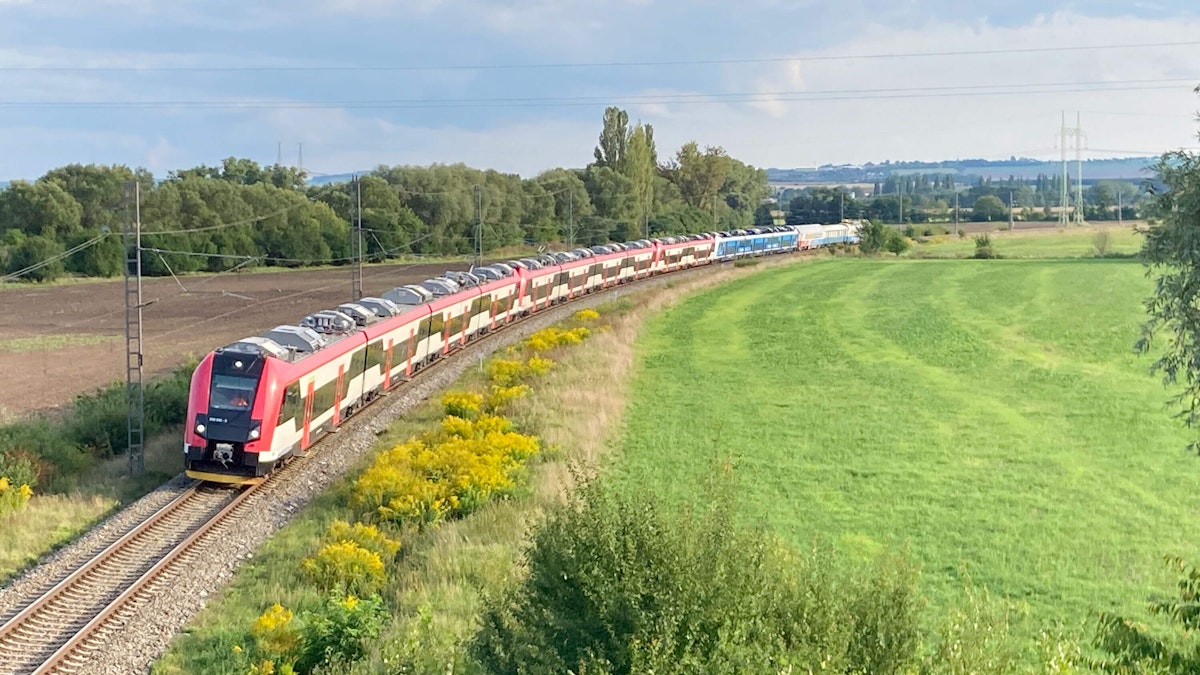Innehållsförteckning
Bläddra bland kategorierna
Bläddra bland författare
 AB
ABAlberto Boffi
 AL
ALAlessia Longo
 AH
AHAl Hoge
 AB
ABAljaž Blažun
 BJ
BJBernard Jerman
 BČ
BČBojan Čontala
 CF
CFCarsten Frederiksen
 CS
CSCarsten Stjernfelt
 DC
DCDaniel Colmenares
 DF
DFDino Florjančič
 EB
EBEmanuele Burgognoni
 EK
EKEva Kalšek
 FB
FBFranck Beranger
 GR
GRGabriele Ribichini
Glacier Chen
 GS
GSGrant Maloy Smith
 HB
HBHelmut Behmüller
 IB
IBIza Burnik
 JO
JOJaka Ogorevc
 JR
JRJake Rosenthal
 JS
JSJernej Sirk
 JM
JMJohn Miller
 KM
KMKarla Yera Morales
 KD
KDKayla Day
 KS
KSKonrad Schweiger
Leslie Wang
 LS
LSLoïc Siret
 LJ
LJLuka Jerman
 MB
MBMarco Behmer
 MR
MRMarco Ribichini
 ML
MLMatic Lebar
 MS
MSMatjaž Strniša
 ME
MEMatthew Engquist
 ME
MEMichael Elmerick
 NP
NPNicolas Phan
 OM
OMOwen Maginity
 PF
PFPatrick Fu
 PR
PRPrimož Rome
 RM
RMRok Mesar
 RS
RSRupert Schwarz
 SA
SASamuele Ardizio
 SK
SKSimon Kodrič
 SG
SGSøren Linnet Gjelstrup
 TH
THThorsten Hartleb
 TV
TVTirin Varghese
 UK
UKUrban Kuhar
Valentino Pagliara
 VS
VSVid Selič
 WK
WKWill Kooiker
Testning av broms- och hjulglidskydd för tåg vid Velim testcenter
Alexandr Galbavý
VUZ Test Center Velim
September 19, 2025
VUZ Testcenter i Velim är en ledande testanläggning för järnväg i Tjeckien. Anläggningen är välkänd för sina omfattande testmöjligheter och sin toppmoderna infrastruktur. Centret stödjer tillverkare, operatörer och tillsynsmyndigheter inom järnvägsindustrin med utveckling, certifiering och godkännande av järnvägsfordon och komponenter. För att säkerställa högsta teststandard vid provning av bromssystem och hjulglidskydd använder VUZ:s testlaboratorium mätsystem från Dewesoft för att registrera mätdata under tester av rullande materiel.

Velim, en liten by med endast 2 000 invånare i Mellersta Böhmen, är hemvist för ett av Europas största testcenter för järnvägsfordon. Här, 40 kilometer öster om Prag, driver Järnvägsforskningsinstitutet Výzkumný Ústav Železniční, a.s. (VUZ) unika test- och teknologianläggningar.
VUZ Testcenter Velim
VUZ förenar modern industriell design med högteknologisk funktionalitet. Anläggningen är belägen i en lantlig miljö där naturliga och konstruerade landskap samverkar. De omfattande testbanorna och byggnadernas rena linjer betonar dock praktisk användning och hållbarhet.
VUZ:s testanläggningar är utrustade med den senaste tekniken och bemannade av experter. Våra faciliteter är välkända för sina omfattande möjligheter och används för ett brett spektrum av tester och certifieringar inom järnvägsindustrin.
Vi stödjer utvecklingen av järnvägsfordon och komponenter, och säkerställer deras säkerhet, tillförlitlighet och överensstämmelse med internationella standarder. Några av våra viktigaste funktioner inkluderar:
En stor hjälpgård för uppställning och stationära tester,
Fyra hallar för förberedelse och testning, och
En kraftstation med europeiska standardsystem: AC 25 kV/50 Hz, AC 15 kV/16,7 Hz samt DC från 750 V till 3 kV.
Anläggningen har dessutom två testbanor:
En stor testbana med en längd på 13,276 km, med möjlighet att nå hastigheter upp till 230 km/h, och
En mindre testbana med en längd på 3,951 km, med en maximal hastighet på upp till 115 km/h. Figur 1 visar layouten för anläggningen.
VUZ:s testlaboratorium
VUZ:s testlaboratorium (ZL VUZ) är ackrediterat enligt EN ISO/IEC 17025 för provning av järnvägsfordon, deras komponenter och järnvägssystem. ZL VUZ omfattar följande enheter:
Laboratorium för dynamisk provning: Utrustat för att utvärdera järnvägsfordons dynamiska egenskaper, inklusive komfort, stabilitet och beteende under olika driftförhållanden.
Mekanisk provningsavdelning: Utför tester av bromssystem, säkerhet mot urspårning samt hygienrelaterade tester såsom buller-, belysnings- och dörrmätningar.
Elektromekanisk provningsavdelning: Genomför EMC-tester med spårkretsar och axelräknare, mätning av externa elektromagnetiska fält, impedansmätningar på järnvägsfordon, dragkraftstester, tester av elektriska kraftförsörjningssystem samt strömavtagartester.
Sedan 2010 har vi implementerat Dewesofts mätsystem vid VUZ:s testlaboratorium. De första enheterna var den dynamiska minidataloggern MINITAUR , och USB-baserade datainsamlingssystemet, DEWE-43A, som kunde registrera 16 kanaler. Sedan dess har vi målmedvetet utökat mätdatabasen för att kunna registrera upp till 80 Dewesoft-parametrar.
För majoriteten av testerna använder vi nu de robusta och distribuerade EtherCAT-modulerna i datainsamlingssystemet KRYPTON samt det modulära datainsamlingssystemet SIRIUS.
Tack vare deras flexibilitet möjliggör mätsystemen för våra ingenjörer att utföra mätningar på enskilda godsvagnar, inklusive automatisk start och stopp av inspelning, samt på tåg med kompletta uppsättningar av multipla järnvägsfordon.
Bromsprovning av elektriska motorvagnståg
Testlaboratoriet vid VUZ utför omfattande provning av bromssystem och hjulglidskydd genom att simulera verkliga driftförhållanden på specialiserade testbanor. Dessa tester tillhör de mest avancerade och kompletta som genomförs vid laboratoriet.
Testerna innefattar noggranna förberedelser, kontrollerad genomförande och detaljerad dataanalys för att säkerställa att bromssystem och hjulglidskydd (WSP) uppfyller strikta krav på säkerhet och prestanda. Våra avancerade faciliteter, utrustning och tekniska kompetens garanterar att alla tester utförs med hög precision, vilket ger värdefulla insikter i effektiviteten och tillförlitligheten hos dessa kritiska järnvägskomponenter
Mätuppställning
För provning av bromssystem på elektriska motorvagnståg använder våra ingenjörer följande uppställning:
Datainsamlingssystem
1x SIRIUSi-8×LV: en åttakanalig isolerad SIRIUS-modul för lågspänning, fullbrygga, CAN och USB2-gränssnitt.
2x KRYPTONi-1xSTG: enkanalig robust och distribuerad EtherCAT-modul med fullständig isolation för mätning av spänning, töjning och potentiometer.
9x KRYPTON-4xSTG: en robust och distribuerad EtherCAT-modul med trekanalig differentiell ingång för spänning, töjning och potentiometer.
1x KRYPTONi-1xCAN: en enkanalig isolerad EtherCAT-modul för CAN-kommunikation.
1x ECAT-SYNC-JUNCTION: synkroniseringsmodul för KRYPtON EtherCAT- och SIRIUS USB-enheter.
1x DS-VGPS-HSC: GPS-baserad sensor för position, hastighet och förflyttning med 100 Hz uppdateringsfrekvens.
Sensorer
Pneumatiska trycksensorer
Accelerometrar
Temperatursensorer
Mjukvara
DewesoftX datainsamlings- och signalbehandlingsprogramvara
SIRIUS är ett mångsidigt och robust datainsamlingssystem som erbjuder avancerade signalbehandlingsförstärkare för i stort sett alla typer av signaler och sensorer. SIRIUS har ett högt dynamiskt omfång (160 dB), galvanisk isolation och finns tillgängligt i USB- eller EtherCAT®-konfigurationer
KRYPTON är ett tåligt och distribuerat EtherCAT-datainsamlingssystem för fältmätningar i extrema och krävande miljöer. Enheten har ett drifttemperaturområde från -40 °C till +85 °C och erbjuder skydd mot stötar upp till 100G. Den har kapslingsklass IP67 och är konstruerad för att fungera under extrema temperaturförhållanden med hög mekanisk tålighet.
DS-VGPS-HSC kombinerar en mycket dynamisk GPS-baserad hastighetssensor med en synkroniserad tidsbasgenerator. Kombinationen möjliggör fullständig och synkroniserad datainsamling från flera system, både inom och utanför rörliga fordon. Det portabla och robusta systemet mäter position, hastighet och förflyttning, och möjliggör synkroniserad datainsamling samt realtidsmätning av hastighet.
Mjukvaran DewesoftX, som används för att registrera och övervaka mätdata, erbjuder avancerade funktioner för datainsamling, analys, visualisering och rapportgenerering.
Typer av tester
Bromsprovning av järnvägsfordon omfattar tre huvuddelar:
Statiska tester för att fastställa bromssystemets parametrar,
Dynamiska tester för att utvärdera bromseffekten, och
Tester av hjulglidskydd för att kontrollera korrekt funktion hos hjulglidskyddssystemet (WSP).
De fordon som testas inkluderar godsvagnar, personvagnar (både enskilda och multipla enheter), lok samt elektriska och dieseldrivna enheter. Storleken på datainsamlingssystemet och antalet sensorer som används vid testerna beror på det aktuella fordonet.
Innan testerna påbörjas upprättar vi en provningsspecifikation. Denna specifikation innehåller en lista över mätparametrar, en förteckning över använda sensorer samt ett testprogram.
Fordonet förbereds i en särskild förberedelsehall, därefter genomförs statiska tester på en hjälpgård och dynamiska tester samt hjulglidstester på vår stora testbana.
Under bromsproven övervakar vi tryck i specifika delar av bromssystemet, inklusive huvudluftledningen och bromsledningen, samt styrtryck till bromsfördelare och bromscylindrar. Vi mäter även acceleration, fordonshastighet, sträcka och temperatur på bromsskivor.
Statiska tester
Vi genomför stationära bromstester för att verifiera bromssystemets grundläggande egenskaper och säkerställa att dess komponenter fungerar korrekt och säkert.
Med hjälp av styrsystemen i förarhytten aktiverar vi tågets bromsar fullt ut. De statiska testerna omfattar bromsning med olika system, inklusive nödbromsning med och utan magnetbroms, elektropneumatisk bromsning samt olika typer av tjänstebromsning.
Utifrån de uppmätta vågformerna för bromssystemets parametrar fastställer vi fyllnings- och tömningstider för bromscylindrarna samt de maximala tryck som uppnås vid olika typer av bromsning (nödbromsning, tjänstebromsning etc.). Vi verifierar även att kompressorn och bromssystemet som helhet fungerar korrekt
Efter mätningarna analyserar vi resultaten, för in de utvärderade värdena för de uppmätta parametrarna i tabeller och upprättar en provningsrapport.
Dynamiska tester
Nästa steg är ett dynamiskt bromstest. Vid dynamisk bromsprovning på tåg utvärderas bromssystemets prestanda under verkliga driftförhållanden, där fordonet är i rörelse.
Dynamiska tester används för att fastställa bromsförmågan hos ett rörligt järnvägsfordon och för att kontrollera nödbromssystemets kapacitet att stoppa tåget. Den grundläggande principen är att bestämma bromsprocenten baserat på uppmätt stoppsträcka vid en angiven hastighet.
Fordonet körs i en fördefinierad hastighet och utsätts för kontrollerade bromsmanövrar. Testförfarandet kan omfatta fulla stopp från olika hastigheter samt användning av olika bromssystem, såsom nödbromsning med och utan magnetbroms, elektropneumatisk bromsning och andra typer av tjänstebromsning.
Vi samlar in data i realtid för att registrera bromssystemets prestanda under bromsproven. Datainsamlingen omfattar mätning av retardation, bromssträckor och bromskraftfördelning.
Våra ingenjörer analyserar därefter den insamlade datan för att bedöma bromssystemets funktion. De utvärderar nyckelparametrar såsom bromssträcka, jämnhet i bromskraft och temperaturökning i bromskomponenter.
Tester av hjulglidskyddssystem (WSP)
Tester av hjulglidskyddssystem (Wheel Slide Protection, WSP) ingår som en del av de dynamiska testerna som verifierar bromssystemets korrekta funktion. WSP-enheten förhindrar hjulslirning och låsning vid bromsning, särskilt under förhållanden med låg vidhäftning mellan hjul och räls.
För att testa WSP-enheten ansluter vi särskilda hastighetssensorer till mätsystemet via CAN-buss. Sensorernas huvudsakliga funktion är att detektera signaler som genereras av rotationen hos en induktionsskiva (phonic wheel), som är monterad på axeländen.
Via dessa sensorer övervakar vi hastigheten för varje axel på testfordonet, funktionen hos de elektropneumatiska ventilerna samt, vid behov, bromskraften från de elektrodynamiska bromsarna.
Vi installerar och kalibrerar WSP-enheter på fordonet. Sensoruppsättningen liknar den som används vid bromstester. Sensorerna möjliggör kontinuerlig övervakning av hjulens rotationshastighet, bromskraft och andra relevanta parametrar.
Vi simulerar sedan förhållanden där WSP-enheter är avgörande. Genom att hälla tvållösning under hjulen under bromsning simuleras låg vidhäftning mellan hjul och räls. För att inducera hjulslirning utsätter vi fordonet för olika bromsscenarier, inklusive plötsliga stopp, snabb retardation och bromsning på ytor med varierande vidhäftning.
Tester utvärderar de momentana hastigheterna för enskilda axlar samt statusen för relevanta WSP-ventiler, inklusive eventuella WSP-utgångar till tågets överordnade styrsystem, t.ex. för dörrblockering, aktivering av elektromagnetisk rälsbroms och initialvärdet för vidhäftningskoefficienten
Mät- och utvärderingssystemet gör det möjligt för oss att omedelbart efter att fordonet har stannat fastställa giltigheten för det enskilda testet, samt att överväga eventuella åtgärder, såsom justering av lösningens koncentration för att minska vidhäftningskoefficienten
Standards and implementation documents
Vi arbetar enligt internationella och europeiska standarder samt nationella notifierade tekniska regler (NNTR) i de länder där det testade fordonet ska användas.
De grundläggande dokumenten för våra tester är Europeiska unionens Tekniska specifikationer för interoperabilitet (TSI). TSI definierar de tekniska och operativa krav som varje delsystem eller del av ett delsystem måste uppfylla för att säkerställa interoperabilitet inom EU:s järnvägssystem. Vi arbetar med UIC-blanketter, TSI för lok och passagerarfordon, samt TSI för godsvagnar.
Internationella standarder inkluderar dokument från UIC (Internationella järnvägsunionen), som har utvecklat den så kallade UIC-koden. Denna kod består av UIC-blanketter som definierar standardregler för att säkerställa säkerhet och effektivitet vid konstruktion, drift och underhåll av järnvägssystem.
Vi använder exempelvis:
UIC 544-1: Definierar bromsprestanda och beskriver metoden för att fastställa bromsförmågan hos järnvägsfordon och tåg.
UIC 541-05: Specificerar konstruktionen av olika bromskomponenter, inklusive hjulglidskyddssystem (WSP).
Andra europeiska standarder vi tillämpar:
EN 14033: Tekniska krav för arbetsmaskiner och andra fordon som används vid byggnation, underhåll och inspektion av spår, strukturer, banformationer och fasta elektriska drivsystem.
EN 16834: Harmoniserad metod för att bedöma bromsprestanda genom provning av lok, passagerarvagnar, godsvagnar och självgående passagerartåg.
EN 1559: Kriterier för systemgodkännande och typgodkännande av hjulglidskyddssystem (WSP).
EN 15595:2018+A1:2023: Uppdaterad version med kriterier för godkännande av WSP-system enligt senaste europeiska krav.
Vi beaktar även Notifierade nationella tekniska regler (NNTR), exempelvis fordonsprovning enligt regelverk i länder som Tjeckien, Slovakien, Tyskland, Storbritannien, Estland, Lettland, Österrike och Spanien.
Slutsats
Det låga dånet från tåg hörs i närheten av byn Velim, där vår specialiserade provning, utvärdering och certifiering av järnvägskomponenter säkerställer säker och tillförlitlig drift av järnvägsfordon och infrastruktur.
Genom att tillhandahålla verklighetsbaserad data och rigorösa testförhållanden stödjer vi innovation och hjälper tillverkare att uppfylla internationella standarder, vilket i sin tur förbättrar prestanda, säkerhet och livslängd för järnvägssystem.
Vi uppskattar Dewesofts mätsystems modularitet, vilket gör det möjligt för oss att optimera mätkedjan beroende på vilken typ av fordon som testas. Vi värdesätter även dess robusthet och hållbarhet. Krypton-mätmoduler installerades på undersidan av godsvagnar under flera veckor. Denna exponering för temperaturvariationer, damm och stötar har visat att Dewesofts system är väl lämpat för tester i tung järnvägstrafik.